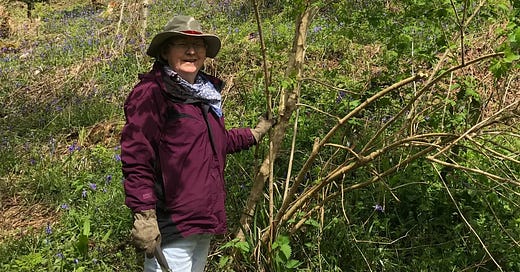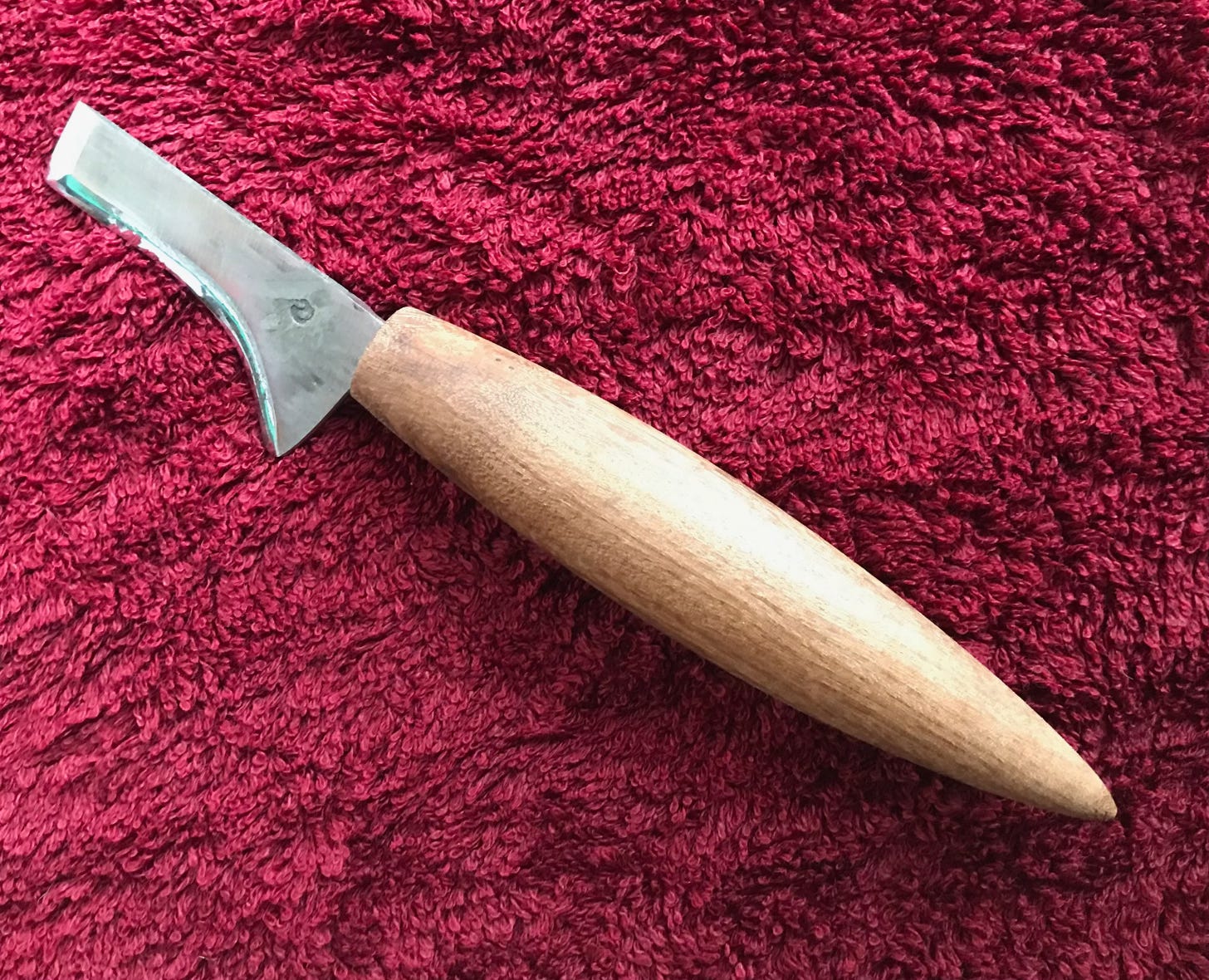There are surprisingly many ways that tree bark can be used for health. Here I muse on why bark seems less familiar when we are thinking of using herbal medicines. I share suggestions for sustainably harvesting and using medicinal barks such as buckthorn and cherry bark. Recipes for cherry bark syrup and buckthorn bark wine provide household remedies for coughs or constipation.
Medicinal tree bark advantages and cautions
Tree bark has many advantages, it can be sustainably harvested, it is easy to dry, it keeps well (except cherry bark - see below), and it can be effective in many herbal preparations. Bark is a wonderful source for herbal remedies as it can be taken from coppiced or pollarded branches, so it is potentially a sustainable source that does not need to be stripped from a main trunk which could kill a tree. Note that while herbal remedies may be highly suitable for common complaints (such as colds, coughs, digestive problems and more), tree barks can have strong effects, and it is important to take advice from a qualified herbal or medical practitioner, especially if you are pregnant or on prescription medication.
How medicinal tree bark is perceived
I find it interesting in Western herbal medicine that we hear relatively little about the health-related uses of home-grown bark. In bakery and cookery, it is commonplace to reach for ground cinnamon, a powdered bark, not just a fabulous spice but also a very useful digestive. Other powdered spices, long deemed exotic and expensive in the West come to mind, many that originate from trees of tropical climates such as cloves and nutmeg. These fragrant resources were so valued in the past that they underpinned huge investment in efforts to control land use and production. As spices had to be imported they were only available for purchase through specialist buyers and warehouses, and this was reflected in the purchase price. Spices nowadays are more readily available and continue as essentials in every kitchen, though exploration of their their history has much to reveal about colonial exploitation. But what about native and locally grown trees - how was their bark utilised?
The value and ownership of past trees
It may not be so surprising that bark has been less widely recognised as a resource for health. In the past the largest trees were valued as a timber resource, and nothing was wasted since the bark could be stripped and saved for use in tanning leather or specialist purposes such as in clothing or boatbuilding. In Europe, oak was a major source though the bark of many other trees could be used in tanning including alder, birch, chestnut, fir and willow. Often the rights to timber and associated produce were not freely available to most people, and only allowed if prescribed in local customs and rules. However, trees and shrubs in hedges and commons were likely to be pollarded to provide forage for animals. These were important sources recognised as a benefit available to tenant farmers and poorer folk. Some practices of bark use persist and in northern Europe the ground inner bark of pine is still an ingredient added to some bread flours today. In the worst of times, some inner tree barks, such as those of pine and aspen, could be used as famine foods.
Using oak bark in tradition
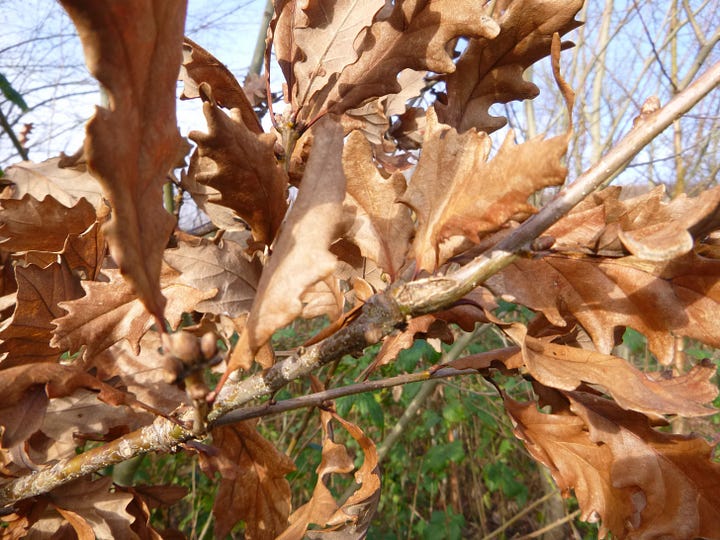
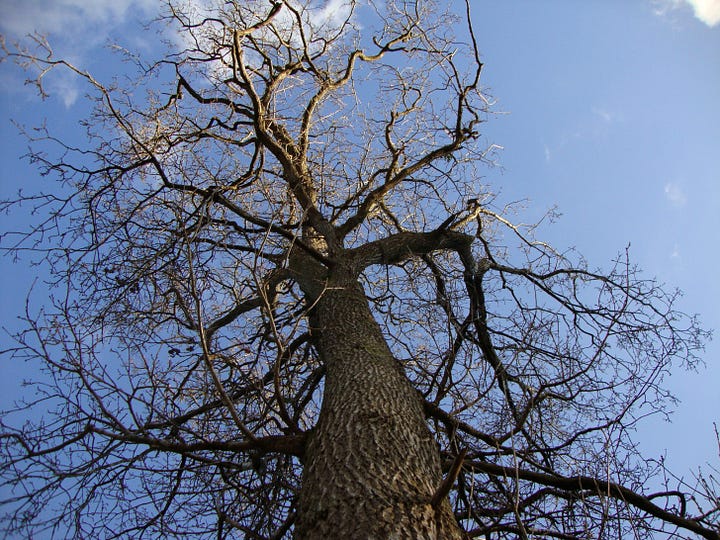
Some tree barks do appear in the archives. Historical records suggest that native oak bark did have a use for health purposes. It was recognised for its astringency and widely used in animal cures for cuts and sores as well as in humans for ague (fever and chills) and haemorrhage. The antiseptic actions of oak bark offered the ability to prevent or reduce diarrhoea, a common complaint due to disease or diet. Maud Grieve in The Modern Herbal (p.596) describes how a decoction of 1 ounce (28 g) of bark would be decocted in a quart of water (1.2 litres) and boiled down to half the size. And fine bark powder was thought to prevent consumption or tuberculosis amongst those involved in tanning leather. According to Allen and Hatfield in Medicinal Plants in Folk Tradition (p.88) there are Irish records of oak bark use as a gargle for a sore throat and a bath for sore feet.
Growing and harvesting bark
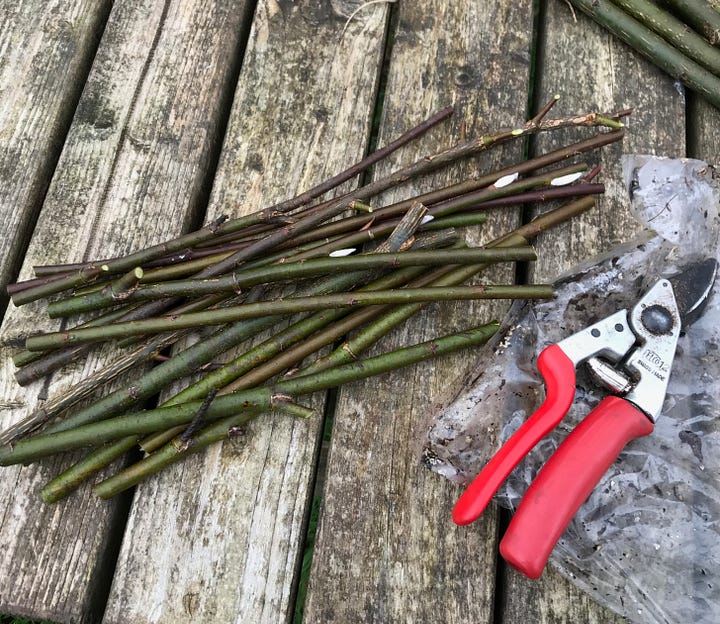

Bark can be harvested at most times of the year. For most trees the best way to obtain fresh young bark without overly stressing a plant involves coppicing, pollarding or pruning in the winter. Bark can be collected during dormancy but is easiest to peel from branches in early spring just as new growth starts, usually before leaves fully develop. Cut pencil-size stems or larger branches with a sharp tree saw or secateurs. I found it is best to work with sections up to 30-90 cm long for ease of handling. Brush off any dirt or insects and remove smaller side shoots close to the branch with a sharp knife – these can be added to garden compost. For medicinal uses it is often the whole bark that can be used, although sometimes just the inner parts of older bark are specified. If only inner bark is wanted then scrape off the thin outer bark layer first. Then make a shallow cut through the bark right along the length of the branch section. The bark should then lift off readily if harvesting in spring, forming quills of curved bark. Otherwise, you have to peel and scrape, avoiding the pith. Cut up larger pieces of bark or twigs into smaller pieces of 2 to 3 cm size. For longer-term storage, bark pieces can be laid out on a tray to dry in a cool, dark and airy location. After 3-4 weeks check that the bark is fully dried, crisply cracking with no flexibility at all, before attempting storage in an airtight container.
Although bark may be more easily lifted in spring, often effective bark stripping requires good cutting and scraping tools. A sharp knife may be needed to lift bark from branches or stems. When I investigated whether there were tools for lifting bark from harvested tree trunks I found out about 'spuds', which are peelers or scrapers similar to large chisels used to lift bark from hefty oak trunks in tanning operations. For a narrow stem, the best tool for lifting bark has a sharper curved edge. It is worth looking out for knives with a suitable shape - I was lucky to find a craftsperson who could make one for me to my specification, ideal for use with fairly small branches. I have nicknamed it the 'Stobie'.
Antitussive cherry bark for dry coughs
The bark of a cherry tree is readily recognized by its shiny brown-purple colouring with horizontal bands. Cherry bark extract can be made into cough syrup. The bark of most species can be used though generally wild cherry (Prunus avium) or bird cherry (Prunus padus) are found in UK. In USA the black cherry (Prunus serotina) is more likely to be used. Cherry trees are strong growers that can be readily pollarded or coppiced, providing young branches a few years old suitable for the harvest of bark. Cherry bark contains cyanoglycosides which are effective in low doses to reduce spasmodic coughing. The kind of cough helped best is a dry cough that is not productive. Note that dried cherry bark does not keep well as the active ingredients tend to deteriorate so it is best to replenish stocks every 12 months.
Alder buckthorn bark for constipation
Once identified as Rhamnus frangula, the alder buckthorn (renamed as Frangula alnus) is an effective traditional laxative. Alder buckthorn is one of two native buckthorns in UK - the other is the purging buckthorn (Rhamnus cathartica). In the USA the related cascara buckthorn (Rhamnus purshiana) provides a well-known laxative bark. The emodin content of these barks also gives antibacterial and anticancer effects. Traditionally these laxative barks are harvested and then stored for a year to reduce constituents that cause excessive griping. The aged bark can be heated in wine, alternatively it can be soaked in water and then used to make a syrup. The bark contains anthraquinones which break down in the gut producing peristalsis some 8 hours later. The effect is a stimulating laxative.
Powdering tools
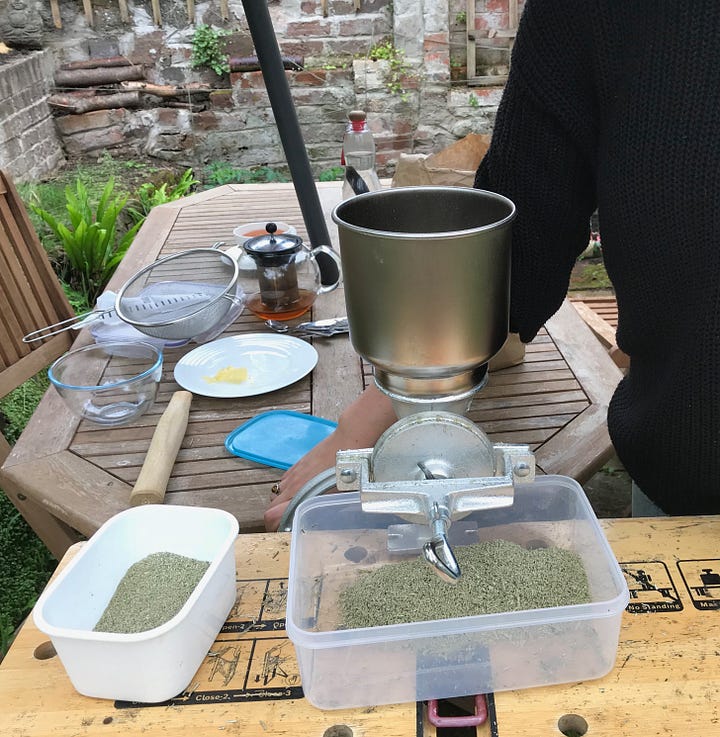
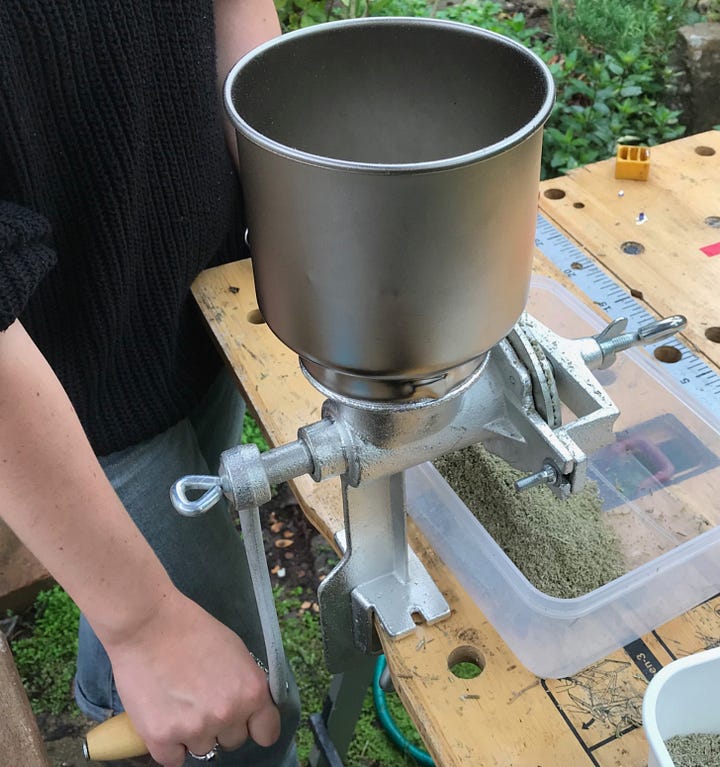
Chopping or shredding of bark may be sufficient for some uses. More efficient extraction is possible when dried bark is powdered. For small quantities, hand powdering of dried herb can be done using a pestle and mortar or a coffee bean grinder, with repeated sieving to remove fibrous material. A hand-operated grain grinder also provides an effective way of reducing dried plant material, and can be adjusted to provide coarse or fine grinding. Powdering does reduce the length of storage time possible for the herb material as the increased surface area is prone to deterioration. So it is best to limit the amounts to those that can be used within a few months. If a powder is sufficiently fine then it is easy to use for making handmade filled capsules. A hammermill grinder is used for professional powdering and larger quantities and there is more about this in my forthcoming post on medicinal tree bark, MAKING RECIPES #9.
Recipe for Alder Buckthorn Wine
100 g alder buckthorn (Frangula alnus) bark, dried and aged
1 litre red wine
Place the aged bark in the wine and bring to the boil. Boil for 10 minutes and then leave to infuse for 2 hours. Drink 1-3 tablespoons before main meals for a digestive stimulant and laxative effect (the laxative effect may be delayed for 8-12 hours). Note that bark at least one year old must be used, or alternatively heat the bark to 100 degrees C for at least 1 hour before making this preparation.
Recipe for Cherry Bark Cough Syrup
250 g cherry (Prunus avium or other Prunus species) bark, freshly harvested
1200 ml water
Honey
Chop up the cherry bark and put in a pan. Pour over 1200 ml boiling water. You will probably need to weight down the bark with a saucer. Allow to stand until cool and strain off the liquid which will smell strongly of almonds due to cyanic acid content. Add an equal amount of honey and stir to mix well. Bottle and label. Take 1 or 2 teaspoons up to 3 times per day. This mixture suppresses a dry cough (not for use when a cough needs to be productive).
Finally
In my next post about tree bark, MAKING RECIPES #9, I will write about more trees and the uses of medicinal barks, showing various ways to powder bark including using a hammermill and how this enables preparations including pills and capsules.
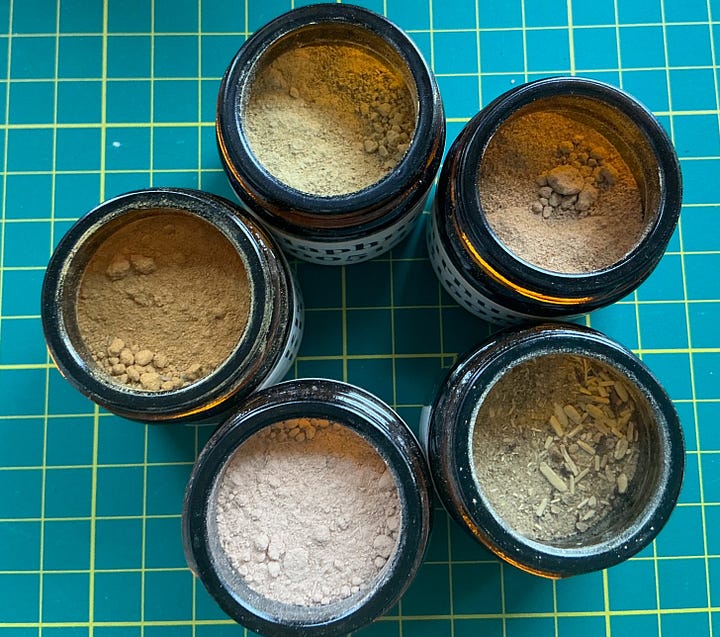

This post is based on updates of past blog posts on the Medicinal Forest Garden Trust website.


